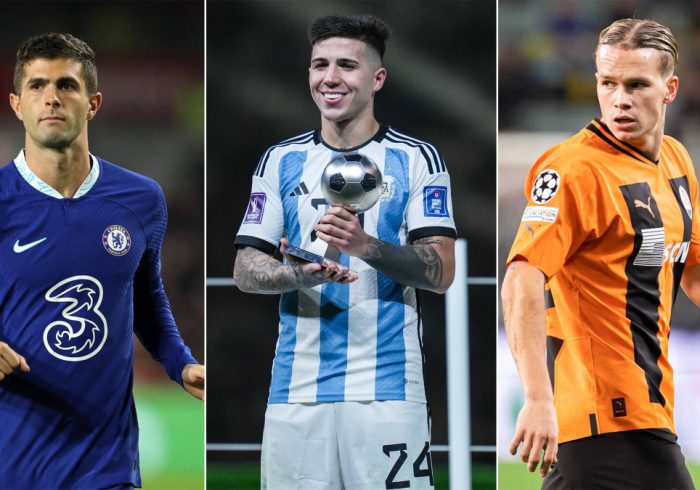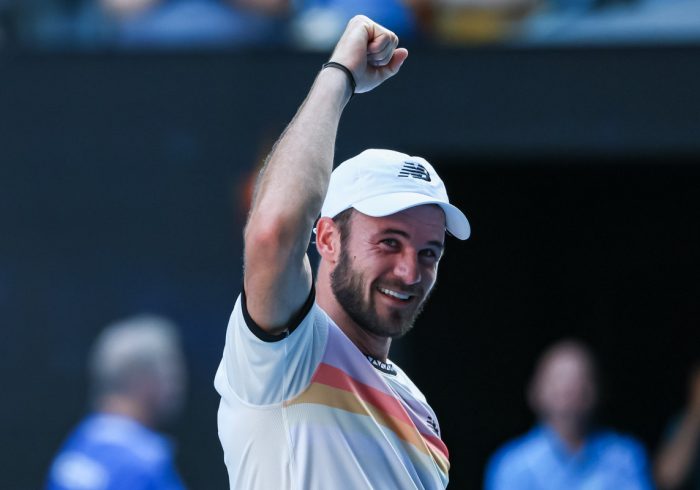Aaron Boone’s Wrecking Ball Lineup is cranking out 7.3 runs per game. Aaron Judge is closing in not just on Roger Maris but also Mickey Mantle, the last center fielder to win the triple crown. And this is happening while a rusty Giancarlo Stanton can’t hit a fastball yet, and Andrew Benintendi and DJ LeMahieu remain on the injured list.
Go ahead and question what kind of run these Yankees can mount in October. Maybe you don’t see dominant starting pitchers. Maybe you think they rely “too much” on home runs, whatever that means.
But by doing so, you’re losing sight of what wins in the postseason in the modern game: home runs and bullpens. That reality is why Boone knows this could be the best equipped of his five Yankees teams when it comes to what it takes to win in the postseason.
“If we get at least close to fully healthy, yeah, I think it has a chance to be,” Boone says. “Benintendi would be big—to get that other left-handed hitter and a solid defender. [Harrison] Bader should be back Tuesday. It has a chance to be a real complete team. Could be [the best].”
The Wrecking Ball lineup took shape seven games ago when Boone batted Judge and Stanton 1–2. The idea in an injury-depleted lineup was to get Judge protection and to get him to the plate as often as possible. Since then, the Yankees are 5–2 and have scored 51 runs in those seven games, with Anthony Rizzo coming off the IL Sunday to take Stanton’s spot behind Judge.
Judge is scalding hot. In the Wrecking Ball lineup he is hitting .535 with a .606 on base percentage. He is so hot that since Aug. 8 he has hit 34 fly balls and almost half of them, 16, have been homers. He would have to cool off considerably not to win the triple crown. Since July 16 he is hitting .387. No wonder Boone is considering keeping Judge in the leadoff spot in the postseason even as the lineup returns to full health.
“I can see Aaron first,” he says. “In the end it depends when we get Benintendi back, what DJ is … But I could see him leading off to try to protect him the best. Maybe in a perfect world I get him to second. It depends on the lefties we have and who we are facing.”
Last year I warned you to stop looking at postseason baseball like it’s still the 1990s: as if it were still built on starting pitching and rallies. Lo and behold, the Braves won it all by getting only three wins from their starters, none of whom pitched three times through a lineup in 16 games. How did they win? They hit home runs. Full stop. They scored 72% of their runs in the World Series on homers.
That is the same path in front of the Yankees: Their starters need only to manage games, not win them, while Judge & Co. hit their home runs. Here is why this is Boone’s best team to leverage the new way of October baseball.
1. They hit home runs.
Under Boone, the Yankees are 1–8 in October when they hit one or no home runs. They are 10–3 when they hit a second homer. You can micro-analyze October baseball all you want, but this comes to the forefront for all teams:
Postseason Win Percentage by Home Runs Hit, 2015-21
| Team Home Runs Hit in a Game | Team Winning Percentage |
|---|---|
|
0 |
.235 |
|
1 |
.484 |
|
2+ |
.716 |
Teams were 2–17 last postseason when they did not homer. That’s only two of 37 games in which a team found another way to win without hitting the ball out of the ballpark—the fewest such postseason wins since 1995. The .105 winning percentage in homerless games was the worst since expanded playoffs began in ’69.
You say it’s hard to rely on home runs against the better pitching of the postseason? Last year the rate of home runs per game was higher in the postseason (2.51) than it was in the regular season (2.45).
2. Strikeouts don’t matter as much as you think.
The Yankees have improved their strikeout rate from 25th last year to 15th this year. That’s good, but not determinative. Of the past 14 teams to reach the World Series, half fell outside the top 10 in strikeouts, including the Braves (22). Teams accept strikeouts as the cost of changing the game with one or two swings.
3. Rallies don’t happen as much as you think.
It’s hard to string together hits in October, even for teams that win it all.
Postseason Batting by Past Six Champions
| Avg. | RISP | |
|---|---|---|
|
2021 Braves |
.246 |
.242 |
|
2020 Dodgers |
.254 |
.268 |
|
2019 Nationals |
.242 |
.262 |
|
2018 Red Sox |
.242 |
.364 |
|
2017 Astros |
.240 |
.245 |
|
2016 Cubs |
.233 |
.248 |
|
MLB Playoff Average |
.229 |
.230 |
The Yankees are hitting .240, their second worst average since the DH was added in 1973. Nobody cares. The major league average (.243) is the worst since the mound was lowered in ’69.
4. The Yankees crush velocity.
Velocity goes up in the postseason (adrenaline, days off, better and shortened staffs, etc.). Last year the average fastball velocity was 93.5 mph in the regular season and 94.9 in the postseason. (Interestingly, fastball use went down, from 51% to 49%.)
New York is the best slugging team in the American League against pitches 95 mph and faster. Only the Dodgers and Braves rank above them.
5. Starting pitchers are game managers.
The Yankees have Gerrit Cole and Nestor Cortes Jr., followed by some combination of Jameson Taillon, Frankie Montas (fighting shoulder fatigue), Luis Severino (coming back from injury) and bullpen games. Not to worry.
In the 1980s starters accounted for 67% of postseason wins. In 2020 that percentage sunk to 51%. And last year it bottomed out at 38%.
Starting pitchers last postseason were 14–21. Relievers were 23–16.
6. What matters on the mound is limiting home runs.
If hitting home runs wins games in the postseason, allowing homers is what loses them. Postseason pitching means limiting walks and home runs. That puts a premium on pitching staffs that limit slugging inside the strike zone.
With their bevy of power sinkers, the Yankees excel at that quality. They rank third in lowest slugging percentage allowed inside the strike zone. Only the Astros and Dodgers are better. Last year New York was 10th.
That stat—a measure of pure stuff—is so important that the top nine teams are all in playoff position entering Tuesday. Last year the top eight all made the postseason.
7. Home run differential.
Combine hitting home runs and limiting them and you get this all-important category:
Greatest Home Run Differential
| Team | HR Differential |
|---|---|
|
Yankees |
+88 |
|
Braves |
+87 |
|
Astros |
+76 |
|
Dodgers |
+64 |
|
Phillies |
+52 |
Last season the Braves ranked third (+56), behind the Giants and Dodgers.
8. A first-round bye.
The new playoff format overly rewards the No. 1 and 2 seeds. The one and two seeds should not lose in the division series, not when they get the first two games at home with a fully rested staff against the third or fourth starters from their opponent.
The Blue Jays are 5.5 games behind New York with 15 and 16 games to play, respectively. It’s unlikely that Toronto can catch the Yankees for the No. 2 seed.
The Astros, a possible LCS opponent, present a huge problem. The AL field is loaded with right-handed starters—16 of the top 20 starters in the rest of the presumptive field are righthanders. The Yankees may be 17th against right-handed pitching when it comes to batting average (.239), but they’re fifth in slugging (.421), which is what matters.
But Justin Verlander, Lance McCullers Jr., Cristian Javier, Luis Garcia, José Urquidy, Phil Maton, Ryan Pressly, Rafael Montero and Ryne Stanek are tailor-made to match up against New York. Only the Dodgers have a tougher right-handed staff to hit. And lefty Framber Valdez is one of the hottest pitchers in the game.
9. Giancarlo Stanton
He is the postseason x-factor for the Yankees. Since returning from his Achilles injury, Stanton is hitting .103 against fastballs. His timing is a mess. Never one to possess a classic swing, Stanton is a heavy rotational hitter out of a closed stance who often gets tied up on velocity inside. No hitter in baseball sees more pitches inside than Stanton (30%).
But Stanton is an extremely streaky hitter. He can look terrible one at bat and get locked in the next and stay hot for weeks.
“We’ve got to get big G going,” Boone says. “That’s key. Because when he gets going, he’s scary. When he’s locked in it doesn’t matter who’s out there.”
The Yankees are a better team than they were last year. They have vastly improved their defense. They are the best team at turning ground balls into outs. Jose Trevino has improved their pitching as a huge upgrade behind the plate over Gary Sánchez. New York steals more bases and doesn’t run into nearly as many outs on the bases.
Those are all real improvements. But those are improvements on the margins compared to how they can mash. Judge is having a historically great season. He has outhomered his peers by the greatest margin not seen since Babe Ruth in 1928. The Yankees have three weeks to surround him fully with help: Rizzo, Benintendi, LeMahieu and a rust-free Stanton. If nothing else, that is why Boone could be taking his best team yet into October.
More MLB coverage:
• Everything in Aaron Judge’s Career Led Him to This Historic Season
• How the New Mets Are (Mostly) Overcoming Decades of Dysfunction
• There Will Never Be Another Adam Wainwright and Yadier Molina
• How the Brewers Can Still Make the Playoffs
• Everything You Need to Know About MLB’s Rule Changes



